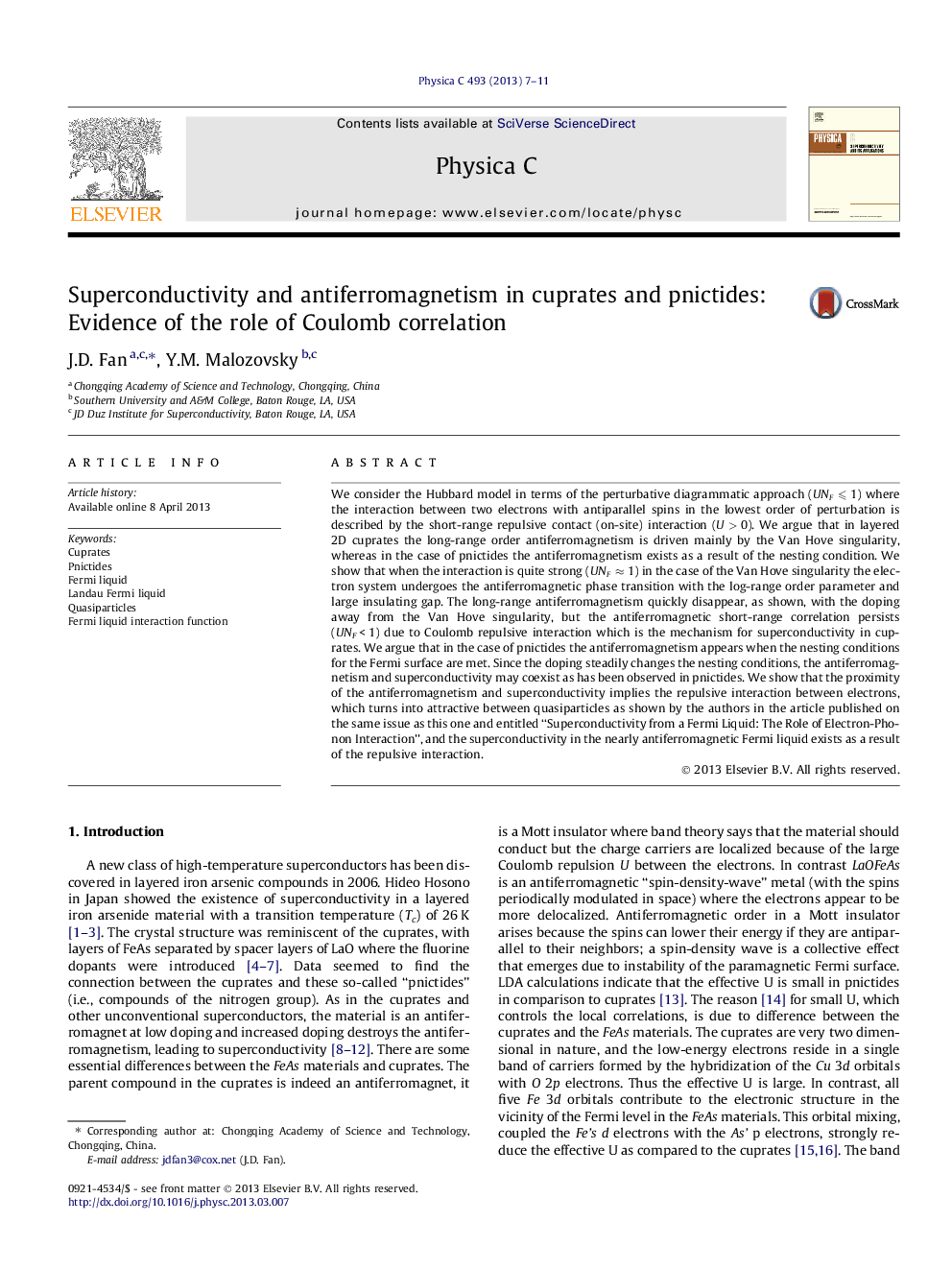| کد مقاله | کد نشریه | سال انتشار | مقاله انگلیسی | نسخه تمام متن |
|---|---|---|---|---|
| 1817931 | 1525719 | 2013 | 5 صفحه PDF | دانلود رایگان |

• In a layered 2D cuprates the long-range order antiferromagnetism is driven mainly by the Van Hove singularity.
• The long-range antiferromagnetism quickly disappear with doping away from the Van Hove singularity.
• For pnictides the antiferromagnetism exists as a result of the nesting condition.
• Since the doping steadily changes the nesting conditions, the antiferromagnetism and superconductivity may coexist.
We consider the Hubbard model in terms of the perturbative diagrammatic approach (UNF⩽1UNF⩽1) where the interaction between two electrons with antiparallel spins in the lowest order of perturbation is described by the short-range repulsive contact (on-site) interaction (U>0U>0). We argue that in layered 2D cuprates the long-range order antiferromagnetism is driven mainly by the Van Hove singularity, whereas in the case of pnictides the antiferromagnetism exists as a result of the nesting condition. We show that when the interaction is quite strong (UNF≈1UNF≈1) in the case of the Van Hove singularity the electron system undergoes the antiferromagnetic phase transition with the log-range order parameter and large insulating gap. The long-range antiferromagnetism quickly disappear, as shown, with the doping away from the Van Hove singularity, but the antiferromagnetic short-range correlation persists (UNF < 1) due to Coulomb repulsive interaction which is the mechanism for superconductivity in cuprates. We argue that in the case of pnictides the antiferromagnetism appears when the nesting conditions for the Fermi surface are met. Since the doping steadily changes the nesting conditions, the antiferromagnetism and superconductivity may coexist as has been observed in pnictides. We show that the proximity of the antiferromagnetism and superconductivity implies the repulsive interaction between electrons, which turns into attractive between quasiparticles as shown by the authors in the article published on the same issue as this one and entitled “Superconductivity from a Fermi Liquid: The Role of Electron-Phonon Interaction”, and the superconductivity in the nearly antiferromagnetic Fermi liquid exists as a result of the repulsive interaction.
Journal: Physica C: Superconductivity - Volume 493, 15 October 2013, Pages 7–11